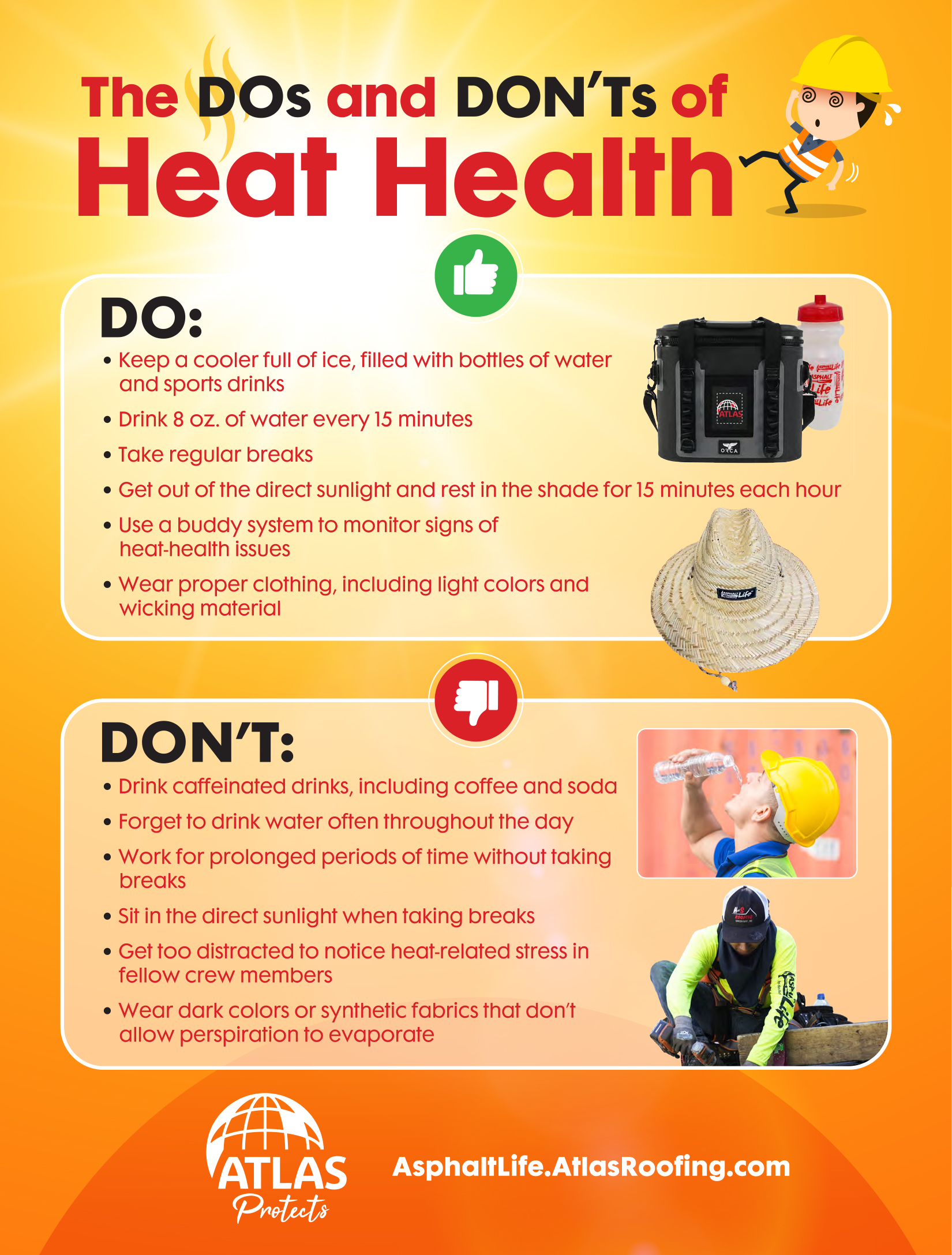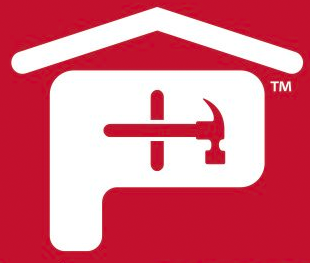

How to Keep Your Crew Cool on the Hottest Days
Are you and your crew taking all the proper precautions against the dangers that can result from working in high-heat environments, such as installing a roof?
When summer days hit the triple digits, temperatures in an unventilated or improperly ventilated attic can reach 150 to 160 degrees Fahrenheit, which can then heat an asphalt roof up to a whopping 170 degrees Fahrenheit. That’s hot enough to fry an egg!
Yet, roofing crews work in these high-heat environments day after day, making them susceptible to heat cramps, heat syncope (fainting), heat exhaustion, heat stroke or other serious heat-related ailments.
To help your workers stay safe and cool in extreme heat situations, think W-R-S-R, which stands for water, rest, shade and repeat.
Water for the Win
One of the best ways to prevent heat-related illnesses is by staying hydrated, which replaces fluids and electrolytes lost through perspiration.
While eight, 8 oz. glasses of water per day is the typical recommendation, those who are active and/or find themselves outside — especially doing laborious work/exercise — during hot days need additional hydration.
Fill a cooler (see some options in the Pro Shop list below) with ice and water bottles/sports drinks and remind your crew to drink 8 oz. every 15 minutes. (Caffeinated drinks should be avoided, as they can exacerbate dehydration.)
Rest and Recover
Just as a car engine can overheat when running for prolonged periods of time, so too can anyone who is working outside on a sweltering day.
That’s why it’s important to encourage your workers to take regular breaks, which allow their “engines” to cool down and recover so their bodies can continue to run efficiently throughout the day.
Soak Up Some Shade
If there isn’t any available shade on a job site, be sure to set up a tent or other shelter (preferably with misting fans) where your crew can retreat during their breaks.
While the air temperature may not feel much different between the sun and shade, especially on humid days, getting out of the direct sunlight for 15 minutes will drop a person’s core body temperature significantly, helping to prevent it from overheating.
Repeat All of the Above
Once your crew has hydrated and rested in the shade for 15 minutes, have them repeat the cycle every hour (or more in extreme temperatures) throughout their shift.
If possible, have workers set up a buddy system, where one works for 45 minutes while their “buddy” is resting, then switch out. This buddy system also allows crew members to monitor each other for signs of heat-health issues, potentially stopping any progression that could ultimately lead to a trip to the emergency room.
Be the Coolest Kid on the Block
In addition to W-R-S-R, roofing crews should wear cooling clothing, such as light colors, which help to reflect heat away from the body, and wicking material, which pulls moisture away from the body where it can evaporate.
To stay cool (and look even cooler!) on the job, pick up some items from the Atlas Pro Shop, such as:
Clothing
- Men’s UA Performance Polo
- Core 365 Men’s Origin Performance Piqué Polo with Pocket
- Core 365 Ladies’ Origin Performance Piqué Polo with Pocket
Hats
- Asphalt Life Straw Hat
- “Live, Roof, Play” White/Black – Relaxed Golf Fit Unconstructed Cap
- Asphalt Life Mountain Patch Cap
- New Premium “Live, Roof, Play” Patch Cap
Hydration
- 20 oz. Asphalt Life Bike Bottle
- Asphalt Life 20 oz. Tumbler – Black
- Asphalt Life 20 oz. Tumbler – Red
- Asphalt Life Red Matte Tumbler
- Toadfish Non-Tipping Can Cooler
Coolers
A Duty of Safety
“Although OSHA does not have a specific standard that covers working in hot environments, roofing contractors have a duty to protect workers from recognized serious heat related hazards,” a Roofing Contractor Magazine article explains. “At a minimum, every roofing contractor should have in place heat-hazard training and a plan to abate an excessive heat hazard. Doing so will not only protect your workers from heat-related illness, but also protect you from unnecessary and preventable OSHA citations and fines.”
To help you do so, the Occupational Safety and Health Administration and National Institute for Occupational Safety and Health offer the OSHA-NIOSH Heat Safety Tool App, which features a real-time heat index and hourly forecasts, as well as occupational safety and health recommendations from both organizations.
For more on how to prevent heat-related illnesses, as well as other safety best practices, check out the Training & Support tab in the AtlasPRO™ Portal, and read some of our related articles:










 Gear!
Gear! PRO LOGIN
PRO LOGIN